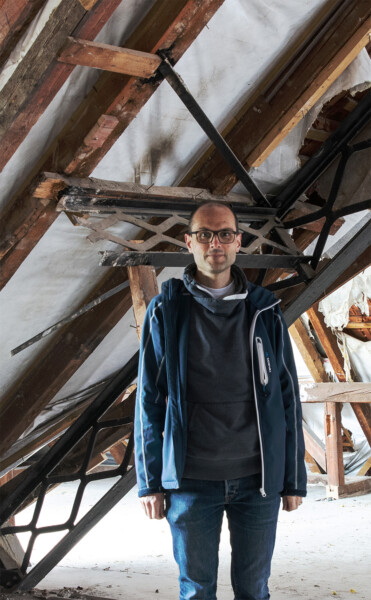Monument mass phenomenon system hall: Detection, classification and knowledge transfer based on model- and data-driven methods for a sustainable preservation
During the peak time of the High Modernism period, from 1914 to 1970, many different types of system halls in steel construction were industrially manufactured to meet the broad demand for new spatial solutions as required by the industrial production conditions and logistics of medium-sized companies. However, this building type has not received proper attention in the field of construction history, resulting still in a lack of fundamental knowledge about the plurality of construction types, their distribution, and site-related context to enable statements on the ability and worthiness of historical monument listing or a broad recognition as useful and sustainable buildings.
In the first funding phase of the SPP 2255 , the project has made a fundamental contribution to the research on system halls as objects in the history of building construction and showed that a localization in large scale airborne images is possible. It currently investigates in depth which specific values as possible monuments of economic and cultural history are attributed to them. From this, it will be possible to develop concepts for the preservation and future use of other modular prefabricated constructions that shape the building scene to a great extent since the High Modernism period.
The focus of this proposal is on the more detailed scientific preparation of system halls in steel construction as a representative, formative example of highly modern industrial construction. We will perform automatic detection of many different system hall types in commercial areas using a methodology based on data-driven methods for building attribute extraction, building detection, and system type classification from aerial imagery. This work will be based on our current work, but extend the state-of-the-art significantly. First, a set of system hall candidates is generated following two approaches: system hall detection and roof type and material classification. Detection is performed based on a learning algorithm which uses knowledge on already identified instances. For cases of types without any known instances, synthetic data is created based on generative deep learning models. In addition, auxiliary information is extracted from all candidates to build an attribute dataset. Subsequently, based on these attributes, a ML algorithm for classification is trained to determine whether a candidate is a system hall, and a system type is assigned eventually. In this step also high resolution oblique imagery will be employed to extract building’s structural details and geometric information.
All information on methods, attributes, and instances of each system type is organized and structured in a database for further analysis, understanding, and evaluation of this mass phenomenon. The project results will be published in the Lower Saxony Monument Atlas of the NLD in order to foster the transfer of theory into practice.
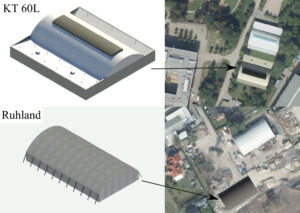
Gerenderte 3D-Modelle von Hallen als Erweiterung für die Trainingsdatensätze.
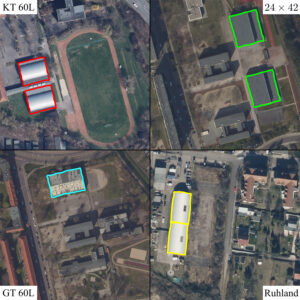
4 verschiedene Hallentypen für erste Untersuchungen von Erkennungsalgorithmen.
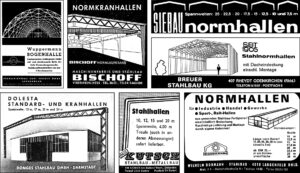
Verschiedene Werbeanzeigen aus der Zeitschrift “Industrie-Anzeiger” der 1960er Jahre.
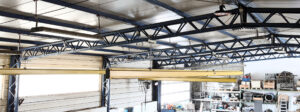
Gewerbehalle, Typ Dolesta-Halle.
Titelbild des Teilprojekts: Flugzeughangar in
Leverkusen, Typ Wuppermann Bogenhalle.



